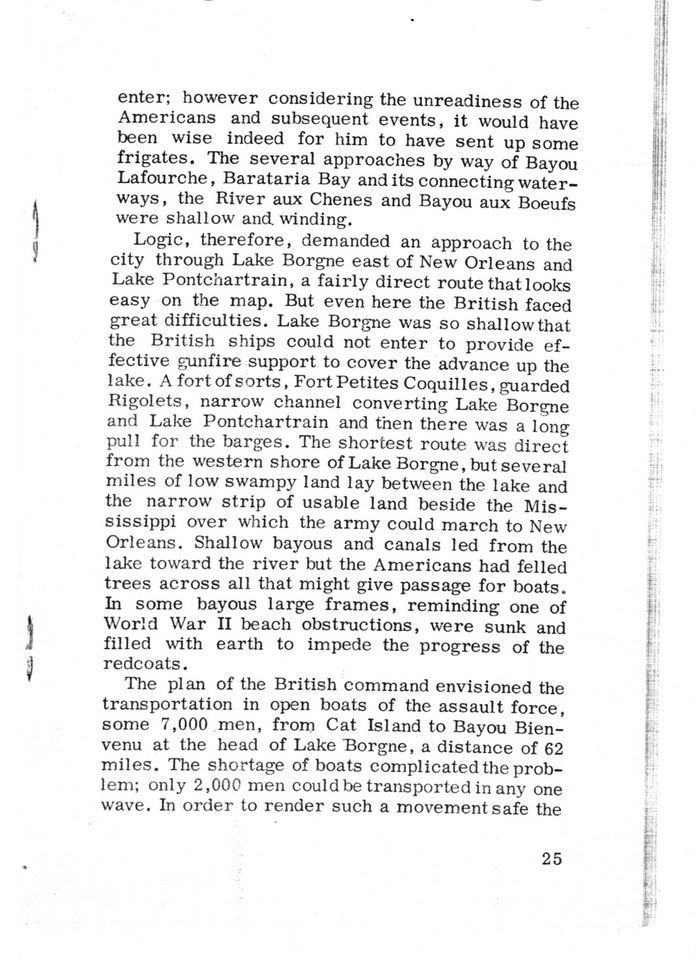This text was obtained via automated optical character recognition.
It has not been edited and may therefore contain several errors.
enter; however considering the unreadiness of the Americans and subsequent events, it would have been wise indeed for him to have sent up some frigates. The several approaches by way of Bayou Lafourche, Barataria Bay and its connecting waterways, the River aux Chenes and Bayou aux Boeufs were shallow and. winding. Logic, therefore, demanded an approach to the city through Lake Borgne east of New Orleans and Lake Pontchartrain, a fairly direct route that looks easy on the map. But even here the British faced great difficulties. Lake Borgne was so shallow that the British ships could not enter to provide effective gunfire support to cover the advance up the lake. A fort of sorts, FortPetites Coquilles, guarded Rigolets, narrow channel converting Lake Borgne and Lake Pontchartrain and then there was a long pull for the barges. The shortest route was direct from the western shore of Lake Borgne, but several miles of low swampy land lay between the lake and the narrow strip of usable land beside the Mississippi over which the army could march to New Orleans. Shallow bayous and canals led from the lake toward the river but the Americans had felled trees across all that might give passage for boats. In some bayous large frames, reminding one of World War II beach obstructions, were sunk and filled with earth to impede the progress of the redcoats. The plan of the British command envisioned the transportation in open boats of the assault force, some 7,000 men, from Cat Island to Bayou Bien-venu at the head of Lake Borgne, a distance of 62 miles. The shortage of boats complicated the problem; only 2,000 men could be transported in any one wave. In order to render such a movement safe the 25

Battle of 1814 P25